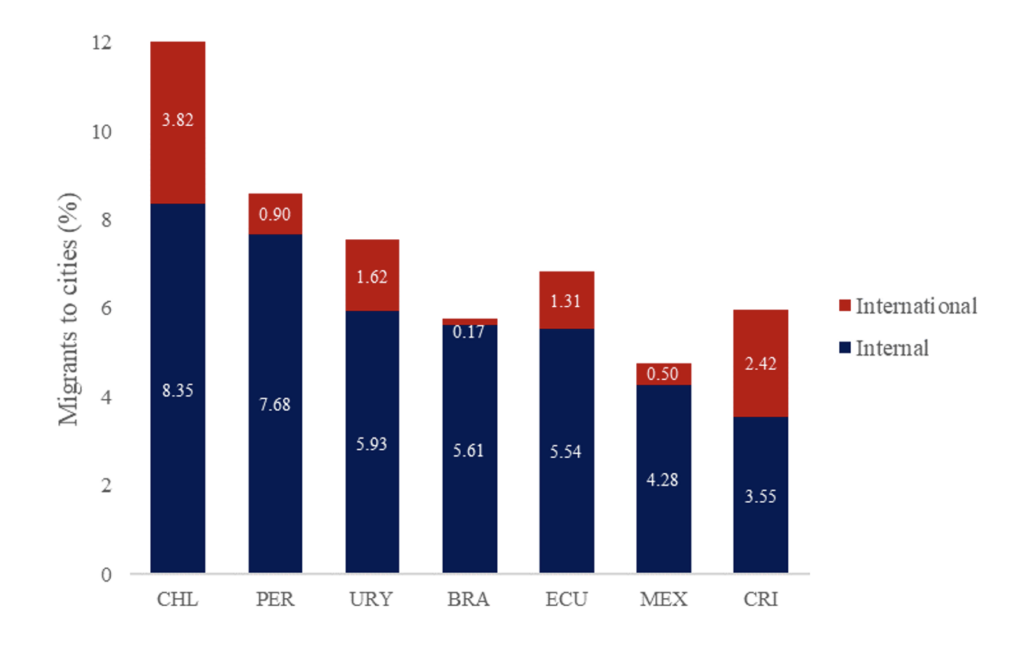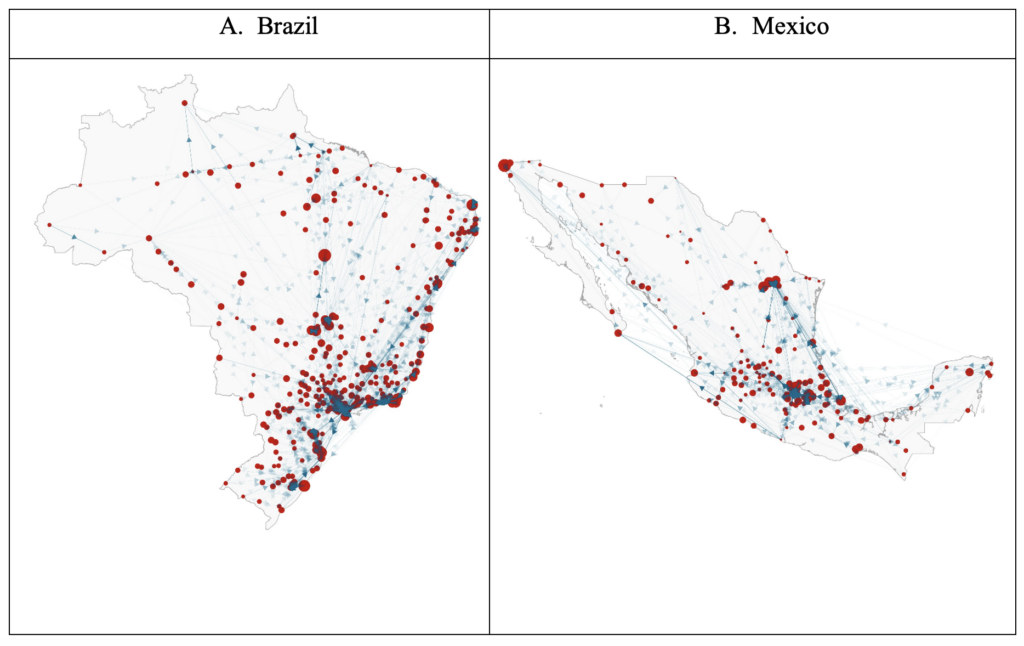The bold headlines about emigration in Latin America and the Caribbean in recent years have centered mostly on Venezuela and Haiti, as the economic crisis in the first country and an earthquake in the second sent large waves of people into other countries of the region, causing international migration there to soar from 5.7 million to 10.7 million between 2015 and 2020.
The attention to this surge in international migration is undoubtedly justified, since those exceptional movements of people have caused international concern and created significant challenges for area governments. Yet, an even bigger story of migration has been the shift of large numbers of people to urban areas within nations, continuing a six-decade trend in which the percentage of people living in the region’s cities has climbed above 80%.
A Transformative Effect
Urban migration, resulting from crime, political conflict, violence, climate change and, most especially the search for economic opportunity, has transformed Latin America and the Caribbean. As we note in Rethinking Urban Migration, our recent report on the subject, it has catalyzed a hefty dose of urban dynamism, as students, workers and managers have congregated in urban centers, creating opportunities for them to share their higher level of knowledge and skills with the rest of society and boost innovation and productivity.
International migrants can also contribute significantly to cities, and some governments of the region have taken meaningful steps towards that end. That includes regularization programs that allow migrants access to the formal labor market and to public education, health and other rights, and programs to certify educational degrees obtained abroad. However, internal and international migration are not equal: international migrants, unlike internal migrants, may still face language or legal barriers to employment. For that reason, internal migrants can more readily integrate into the economy of their receiving cities and contribute to their development.
A Dataset that Distinguishes Internal from International Migration
To better understand the trends in urban migration, we constructed a dataset that combines census and survey microdata with geospatial satellite data, delineating cities based on night lighting and daytime imagery. This enabled us to distinguish between people moving within the same city and those migrating between different urban areas, producing a more precise understanding of the migration to cities. We also integrated recent statistics on international migration in Latin America and the Caribbean.
Our results show that internal migration remains a pivotal force in urban expansion across Latin America and the Caribbean. As Figure 1 illustrates, prior to the recent exodus of large numbers of people from Venezuela, internal migration was the principal factor in the growth of the region’s urban populations, and it continues to play that role. In most countries, internal migrants comprise between 5% and 12% of city residents, forming the majority of newcomers in urban areas. If international migration has significantly influenced city demographics in nations like Chile and Costa Rica, its impact has been relatively modest in other countries of the region.
Figure 1. Migration Composition: Internal and International Migration

Notes: Here the denominator is the sum of all residents, internal migrants, and international migrants living in a GHS city at the time of the census.
Internal migration is widespread. Figure 2 depicts net flows of internal migration in two countries of the region, with the size of each dot representing the share of internal migrants relative to the city’s population and the arrows indicating the direction of net migration flow. It reveals that internal migrants not only go to large cities, such as San Jose, Montevideo, and Lima, but also to medium and small cities. This is the case not only in Brazil and Mexico, as revealed in this figure, but in virtually all countries of the region. Indeed, while bigger cities attract more migrants in absolute numbers, the effect is proportionally the same for larger and smaller cities alike.
Figure 2 Net Flows of Internal Migration

Notes: These maps depict net internal migration flows, indicating the movement of migrants from city A to city B (subtracting migrants from city B to city A). If the number of migrants from city A to city B is higher than from city B to city A, an arrow points in that direction. If the number from city B to city A is higher, the arrow points in the opposite direction. The width of the line represents the magnitude of the net migration number, while the size of the dots represents the proportion of migrants in destination cities as a percentage of the 2015 city population. Only flows with a total of more than 30 people are included.
Preparing for the Challenges of Migration
Migration potentially offers all cities the benefits of agglomeration economies (the gains that arise when firms and people locate near one another). It can also create dynamics in which highly skilled workers spread their skills and knowledge to the rest of society, and there is better access to large consumer and supplier markets for goods and services. But migration also poses real challenges in terms of higher housing prices and stresses on public services, like transportation and health care, among others. Bigger cities tend to have greater resources to deal with those problems than smaller ones. That means, as our report emphasizes, that countries must be prepared. They must ensure the existence of robust legal frameworks and comprehensive data infrastructure, skilled personnel such as urban planners and experts in geographic information systems (GIS), and inter-agency coordination at local, state, and national levels. International institutions may also play an important role in enabling local policy makers to harness the potential of urban migration for the small and large cities of our region.

